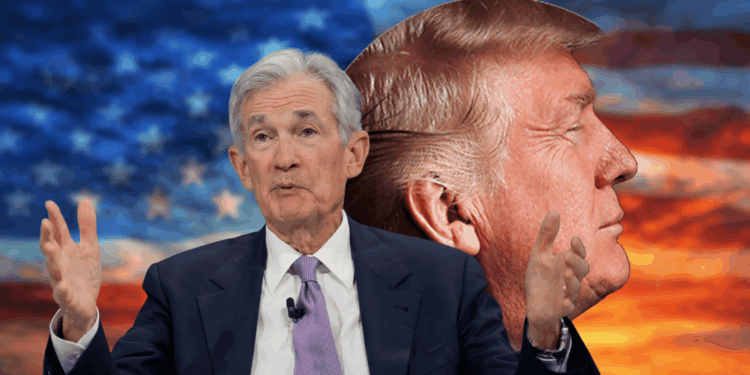- The Federal Reserve is expected to keep rates unchanged this week, resisting pressure from President Trump to cut.
- Trump’s tariffs are beginning to push inflation higher, complicating the Fed’s ability to stimulate the economy without risking price instability.
- Firing Powell could backfire, triggering higher Treasury yields, mortgage rates, and market volatility, undermining the Fed’s credibility.
President Donald Trump‘s push for lower interest rates has hit a wall at the Federal Reserve, with Chair Jerome Powell and most of the Federal Open Market Committee (FOMC) expected to hold rates steady this week. Despite escalating political pressure, particularly in the face of Trump’s aggressive tariff policies, the Fed appears poised to prioritize inflation control over economic stimulus through rate cuts.
Powell has repeatedly insisted that the central bank must take a measured approach. Financial data from Nomura and other groups back this strategy, suggesting the economy remains robust, with low unemployment and strong growth despite early signs of tariff-induced inflation. Still, Powell’s resistance hasn’t quieted speculation about his job security, as Trump has publicly hinted at firing him—though legal experts remain divided on whether he has the authority to do so.
Inflation and Tariffs Complicate Monetary Policy
One of the Fed’s key challenges is navigating the growing impact of Trump’s trade war on inflation. June marked a noticeable uptick in consumer prices for items like apparel and appliances, likely linked to new tariffs. While Powell has acknowledged these inflationary pressures, he argues that they may not be long-lasting, especially if consumer demand starts to wane.
Meanwhile, the administration has leaned heavily on Powell to initiate rate cuts, arguing that it would not only lower borrowing costs for Americans but also reduce the national debt service. However, rate decisions ultimately rest with the FOMC—a 12-member body that includes some Trump appointees like Christopher Waller and Michelle Bowman, both of whom are supportive of cuts. Yet even they may not sway the committee enough to move the dial just yet.
Risks of Firing Powell Could Be Far-Reaching
Although Trump has seemingly pulled back from the idea of removing Powell, the very notion has rattled markets and investors. Analysts warn that such a move could cause Treasury yields to spike and undermine trust in the Fed’s independence, leading to more market volatility and ultimately, higher inflation. Treasury Secretary yields would likely rise, increasing mortgage rates and the federal government’s borrowing costs.
The Fed’s decision to maintain its benchmark rate between 4.25% and 4.5% has helped anchor inflation expectations so far. Any abrupt leadership change or shift in monetary policy direction could disrupt that delicate balance and further complicate the fight against inflation.
Powell Remains Steadfast Amid Political Storm
Despite the escalating political noise, Powell has given no indication of bowing to Trump’s demands. He continues to emphasize data-dependent policymaking and patience in the face of tariff-related uncertainties. The next FOMC meeting in September could bring a different outcome if economic indicators shift, but for now, the Fed is holding firm—even as political rhetoric intensifies.
Vice Chair Philip Jefferson, a Biden appointee, would likely step in if Powell were removed, but Jefferson himself has taken a similarly cautious stance on rate cuts. That suggests Trump’s desired policy pivot may not materialize, even with new leadership at the Fed.














